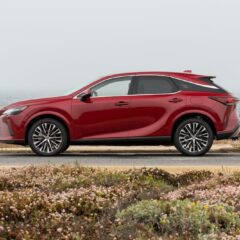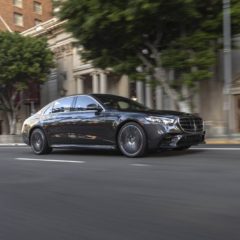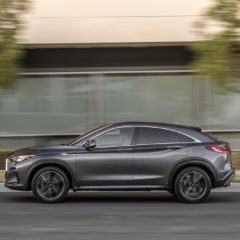Source: AutomotorPro.com – Automakers can’t understand the hispanic market?
Written by Enrique Kogan and Marco Carvajal
According to the latest stats from the Census Bureau in 2017, there are more than 58.9 million Hispanics living in the United States, and by the year 2030, Hispanics in the United States are expected to be more than 72 million!
Hispanic population growth not only means more Hispanics, but also a transformation of the consumer market in the United States, including the huge and competitive automobile market.
The purchase of a vehicle is an important event, and many Hispanics want to buy a car in their own language, in Spanish. For a car dealer is extremely important to invite and welcome hispanic potential buyers in their own language, en Español.
To speak Spanish is not enough to sell a car, it is better if a dealership understand the culture of our Spanish world. We come from several countries like Argentina, Costa Rica, Mexico, Panama, Colombia, Venezuela, Chile, Guatemala, Peru, Ecuador, Uruguay, and more…and each one of our countries is different, but our culture is very similar, we have the same roots, we are a melting pot, we are extremely social and love to talk about important decisions like buying a car. We like analyze and talk during hours, just like the old philosophers used to do. We don’t like short incomplete answers or short explanations. We like details. We like negotiations, we love promotions, discounts, deals, special offers. That is our culture! and if a dealership or carmaker understands our culture, then it will be much easier to sell a car to our hispanic people. But unfortunately many car dealers or executives or agencies working for car makers don’t understand our culture and instead of taking advantage of the huge hispanic market end up wasting their advertising budget and losing millions of dollars in potential sales to the hispanic population in the U.S.
Minority groups represent the majority of the population in more than 400 counties in the U.S. as the country is becoming multicultural and Hispanics are becoming majority.
Besides new immigration laws, every year more Hispanics will move to the United States and most of them will need to buy car, due to the lack of efficient public transportation in most cities in the US.
The growth of the Hispanic market is surpassing the general market in almost 3 to 1, and there are many automotive companies that do not see this huge potential opportunity to sell cars, and if they see it, they do with one eye patched. Automakers, PRs, Marketing and Advertising companies need to think in Spanish, need to understand our culture and where we com from.
One way to do this is for advertisers to realize that when it comes to Hispanics, not all campaigns are the same, and much of this is due to the great diversity that exists within the Hispanic population, depending on age, language, nationality and other demographic and ethnic factors. Automakers need to understand the different marketing segments within the hispanic market.
Hispanics are the youngest ethnic group in America, therefore they have more years of spending than non-Hispanics. A factor such as age in a marketing campaign could not only affect the platforms in which brands need to advertise, but also the size of the audience for such campaign.
While some car brands are beginning to face these facts, there is still a long way to go before advertisers understand the Hispanic market and realize its potential. Advertisers need to understand that today’s Hispanic consumers are not the same as Hispanic consumers of some years ago. They are now the youngest ethnic group in America, with an average age of 28 years old. Understanding young auto buyers is crucial for advertisers, as it influences media consumption habits, the technology they use, and much more.
Brands that still do not understand the market
Given the cultural demographic shift that is occurring across the United States, it is difficult to understand why there are car manufacturers that have been so slow to respond or do not respond at all to the huge opportunity that our hispanic population represents.
Understanding Hispanics means potential millions of dollars in buying power.
The commitment to Hispanics begins with the commitment to understand who they are as people and accept that their cultural values greatly influence the natural ways they think, the way they perform and how to motivate them to buy a car.
The average age of Hispanics in the country is 30 years, compared to 42 years for non-Hispanic Americans. That translates to 12 years of additional life in the purchase of automobiles, for the average Hispanic.
This means that a brand like Kia could sell an entry level car for less then $20K to the younger hispanic consumer and keep selling a new car every 5 years to the same consumer. Eventually selling a $50K car to the same consumer. The selling potential is huge!
About 21% of car purchases made for Hispanics were for their first vehicle. Therefore, brands are more likely to reach them first, of course, with ads targeted for them and if possible in their own language. Even if most hispanics are bilingual and speak English and Spanish, they prefer to buy cars in Spanish.
Last year, automotive companies spent some 600 million in the Spanish-language media, mostly on open channels that are irrelevant for young people.
Young hispanic or even mid-age hispanics are usually tired or the traditional boring large TV network channels. Most of these super-large networks show very old hispanic movies, or they make new TV shows in the style that our grandparents used to like, mostly targeting Mexican agriculture workers in the US.
Unfortunately we don’t have hispanic TV networks or large media that make shows in a more modern and “cool” style, the way most young hispanic like to watch, therefore the only way to reach most of these latin buyers is though independent websites and social media.
The 600 millionadvertisement budget for hispanics is very far from the 25 billion dollars for the general market. Car companies should invest more into the hispanic market.
According to a PwC report, Hispanics not only use the Internet to consume content, but also to create a digital community of friends and family. Hispanics of all ages continue to be the first digital consumers. By being the first to adopt emerging technologies such as smartphones and other smart devices, Hispanics lead highly committed online lives and consume content primarily on their mobile devices.
The same report shows that about half of Hispanic consumers said they use the internet to find the products they need to buy. It should not be surprising that Hispanics in the United States spend more time on social media every day and are almost twice as likely to disseminate information and review products and services online than their non-Hispanic counterparts. Digital platforms are key to keeping in touch with their culture, which means that brands that focus their campaigns on being culturally relevant are more likely to obtain the benefits of this digitally engaged audience, something that some car advertisers still don’t understand.
How to win the Hispanic market
Winning in the Hispanic market requires a new mindset, new best practices and a completely new way of thinking about how to authentically engage your business with Hispanics and at the same time support a business model to maintain it.
Carmakers who can get in front of this audience with the right message can make a lasting impression and open the way for this unattended audience.
The very poor Hispanic agencies that exist in the country are challenged by the hesitation of American corporations to invest adequately and to commit themselves to the Latino market.
These agencies are often forced to support a so-called total market strategy, reaching mass media such as open television, which only covers a segment of older car buyers and newly arrived Hispanics, who do not have better economic power than those who manage digital platforms.
Winning in the Hispanic market requires much more than a total market strategy, as this approach lacks authenticity and limits the way brands engage with Latino consumers.
As a result of the confusion and limitations of the mass market that the total market has imposed on brand marketers, Hispanic agencies have become desperate to introduce another wave of new commitment models. These agencies are hoping to convince corporations and their brands that there is a more authentic approach to winning the Hispanic market.
Unfortunately, many of these proposed commitment models are further complicating things for brands, which are already skeptical about the Hispanic market opportunity, given the less favorable attempts to generate the desired and sustainable return on investment.
There are TV advertisements made by Hispanic agencies, that seem to date back to the 60s. Example;
A woman drives a minivan (let’s say “Marmota” brand) and arrives to pick up her friend (Carlota). She enters the minivan and soon after leaving, a dog suddenly crossed their path, and the minivan could brake at once. The driver says “Thanks to my Marmota, nothing happened to my friend Carlota”. They continue on the road, and a headline appears “If it’s Marmota, it’s good.”
This type of boring ads have been used for decades in Spanish open TV, which continues its boring programing with tele-novelas, and sensational news. This type of TV networks are boring for most hispanic car buyers.
Many brands do not know how to communicate consistently and participate in authentic ways when it comes to Hispanic consumers and that highlights their cultural values and how those values greatly influence what Hispanics expect from brands, their products and services. Meanwhile, the Hispanic market remains open for brands to dominate and capture a valuable market share and profitability, if done correctly.
There are few brands that hire Hispanics for their public relations team, something that happens to be a time bomb, since these public relations officers receive unmonitored power, which help them inflate and use their power for their personal interest, instead of thinking about the long-term benefit for their brand. They invite those who can help them dominate and make them write whatever they want. If someone is against them, then they delete them, regardless of what could benefit or harm the car manufacturer. But these executives do not care, since their bosses do not pay attention to them or to the hispanic market
For my surprise there are brands that avoid the Hispanic market, such as Subaru. During one of their press presentations I met with their marketing manager. I asked him why Subaru is not advertising in the Hispanic market? He replied: “We have nothing to do there.” They did not invite me to any Press events anymore! It is unbelievable.
If the design and approach of the Hispanic market strategies of a brand are not created correctly, the risk profile increases exponentially, and you can expect to never capture a significant level of success and commitment.
In fact, the opposite may happen, since Hispanic consumers will remember how a brand was not authentic in its approach. And in our 35 years in the Hispanic car market, we can list several that have made disastrous advertisements.
Winning the Hispanic market is not a short-term task; it demands a long-term commitment to help heal the identity crisis through authentic commitment.
In fact, if you think in general terms about the market, ask yourself which brand has won in any market without committing to participate authentically with your target audience?
Who are the 10 most influential brands with Hispanics
Kia and Hyundai are expected to report as a group for the future and take fourth overall, and reach the third by 2020. Jeep will overtake Dodge, and later Volkswagen will do the same to leave Dodge last in the top 10
These figures have not been updated since 2016, there will be changes with the 2020 update.
- Toyota 16.90%
- Honda 12.60%
- Nissan 11.70%
- Chevrolet 9.10%
- Ford 8.50%
- Kia 4.60%
- Hyundai 4.50%
- Dodge 3.70%
- Jeep 3.50%
- Volkswagen 2.50%
* Source: IHS Automotive Polk.
Source: AutomotorPro.com – Automakers can’t understand the hispanic market?








